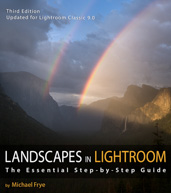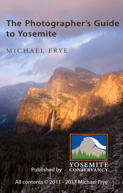In the Moment:
Michael Frye's Landscape Photography Blog
by Michael Frye | Dec 31, 2025 | Announcements

Gentoo penguins on an iceberg, Antarctica
Happy New Year everyone! I hope you all have a wonderful holiday, and lots of beautiful light and wonderful adventures during the coming year.
Claudia and I will be ringing in the New Year at 30,000 feet over the Pacific Ocean while flying to Chile, and then we’ll continue to Antarctica on January 3rd. I can’t wait to get back to the land of ice and penguins! And I can’t think of a better way to start the new year.
— Michael Frye
by Michael Frye | Dec 30, 2025 | Announcements
The votes are all in and counted, and here are my top photographs of 2025!
We had a great response this year: 542 people looked through my initial selection of 52 images and voted for their favorites. A big thank you to everyone who took the time to view these photographs and voice your opinions! I also really appreciate the kind words so many people posted in the comments or sent by email. I wish I could respond to everyone, but please know that I’ve read them all and am very grateful for all your support.
(more…)
by Michael Frye | Dec 29, 2025 | Announcements
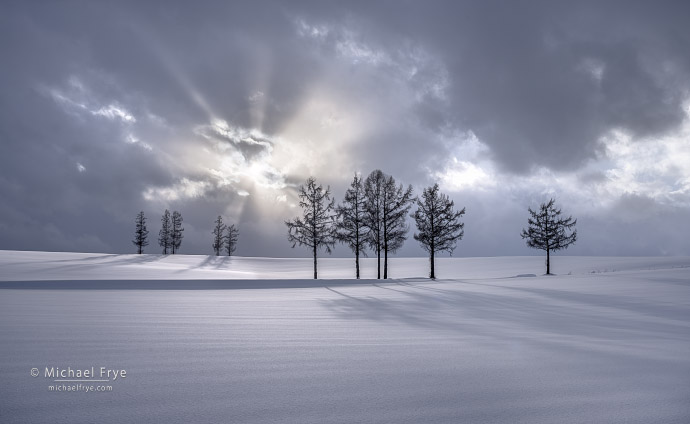
10. Snow, trees, and sunbeams, Hokkaido, Japan
Just a reminder that this is the last day to cast your votes for my best photographs of 2025. You have until midnight! Again, please don’t send your votes to me by email, or post them in the comments, or they won’t be counted. Use the form at the bottom of my earlier post to cast your votes.
Thanks to everyone who already voted! I appreciate your help. 🙂
(more…)
by Michael Frye | Dec 24, 2025 | Announcements, Wildlife Photography
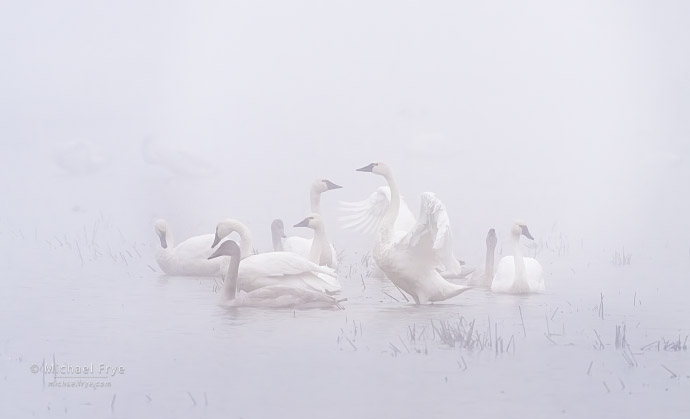
Tundra swans in fog, Sacramento Valley, California
Claudia and I feel lucky to have experienced many special moments this past year, including two mornings in the Sacramento Valley last month photographing tundra swans in the fog. I posted one of the swan images yesterday with my best-of-year nominees, but here are a few more. I had long wanted to photograph swans in fog – white on white, with elegant white birds against a white backdrop. It was wonderful to finally get that opportunity.
I hope these photographs feel peaceful. In reality, swans are often squabbling with each other. After every altercation, however, they flap their wings, shrug it off, and swim away, wrapped in serenity once again. They’re focused on the present, not the past, and the squabble is forgotten. That seems like a good lesson for us.
(more…)
by Michael Frye | Dec 23, 2025 | Announcements
Merry Christmas and Happy Holidays!
Once again I’m inviting you, my faithful blog readers, to help me choose my best photographs from the past year. I’ve posted 52 of my favorite images from 2025 below, in chronological order. After you look through these, please use the form at the bottom of this post to list your ten favorites. The voting deadline is midnight Pacific Time, Monday, December 29th. Once the votes are in I’ll post the top ten or twelve on this blog.
(Voting has closed!)
As always, I reserve the right to override the votes if one of my favorites gets panned. But I’ve rarely had to exercise this power because my readers have excellent taste. 🙂
Thanks for your input — I appreciate your help!
(more…)
by Michael Frye | Dec 21, 2025 | Night Photography
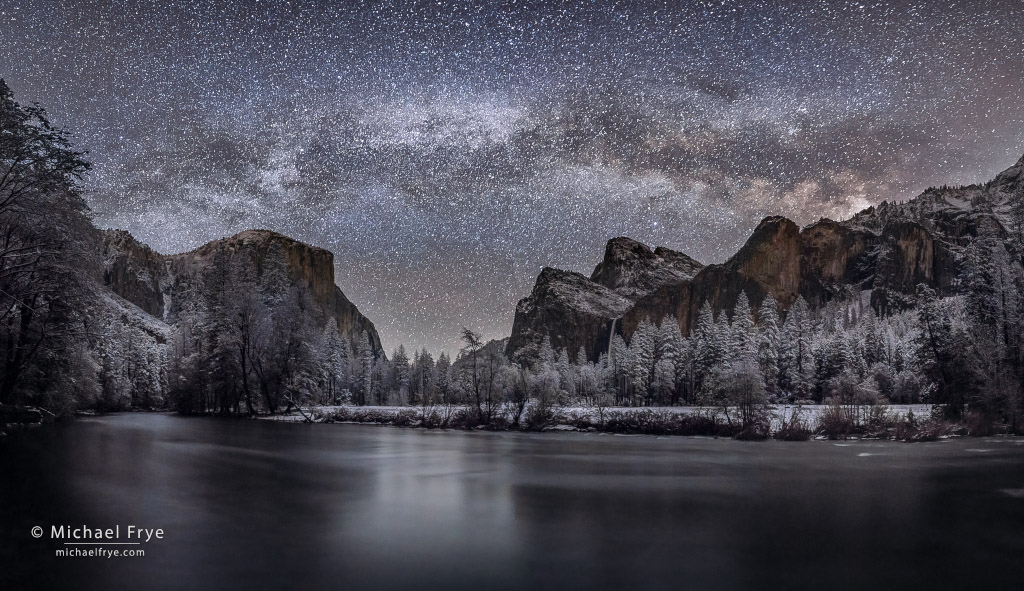
Milky Way over Yosemite Valley, Yosemite NP, California
There are many approaches to creating successful photographs. Some images are meticulously planned. Others are entirely spontaneous. But I think there’s a large middle ground where there’s some planning and some degree of serendipity. And most photographs probably fall somewhere in that middle.
Even if the idea is as basic as “I’m going to walk down this trail and see what I find,” that’s still a rudimentary plan. And if you plot out every detail of a photograph in advance, well, you know what they say about the best-laid plans. It’s rare that a pre-conceived idea goes exactly as you imagined. You almost always have to adapt and change. Sometimes it’s a small change, like moving the camera position or composition slightly. Sometimes conditions force you to completely scrap your original idea and pivot to something else.
(more…)
by Michael Frye | Dec 19, 2025 | Announcements
A Landscape Photography Webinar
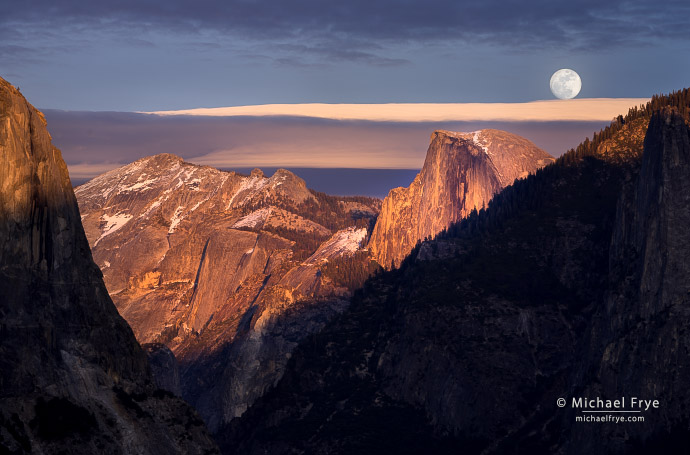
Moon rising above Half Dome from Tunnel View, Yosemite NP, California
Learn how to use simple, powerful tools to plan photos of the sun, moon, Milky Way, or any celestial object
We have powerful tools for photo planning at our fingertips – apps that allow us to predict where the sun or moon might rise or set in relation to the landscape, how the light will look at a given time and place, the position of the Milky Way above the land, and much more.
Unfortunately, many of these tools are excessively complicated, unintuitive, and difficult to learn. I know many photographers who have thrown up their hands and given up when faced with the dense complexity of these apps.
But it doesn’t have to be that way. In this new webinar I’ll show you how I use a few simple tools to precisely visualize the position of the sun, moon, Milky Way (or any celestial object) in relation to the landscape, and see how the light will change for any scene. We’ll delve into apps like PhotoPills, The Photographer’s Ephemeris, The Photographer’s Ephemeris 3D, and Planit Pro – but we’ll stick to the things you need to know, bypassing the extraneous stuff that only gets in the way.
(more…)
by Michael Frye | Dec 14, 2025 | Light and Weather
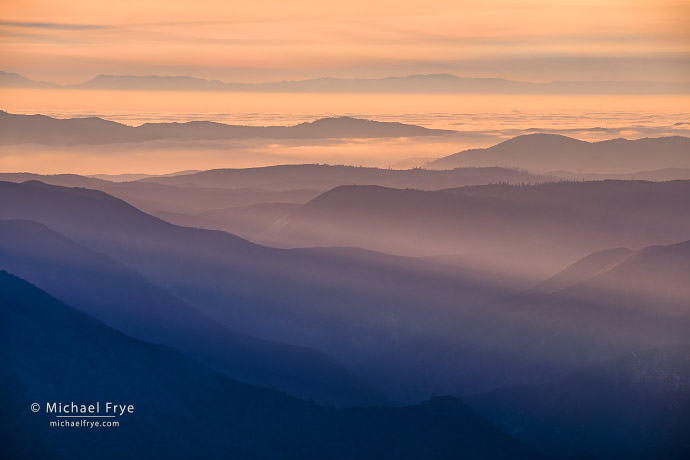
Mist, sunbeams, and a fog layer, Sierra Nevada foothills, California.
We’ve had a persistent temperature inversion in California’s Central Valley over the last three weeks. That’s a long time; in fact I can’t remember an inversion lasting this long before.
Normally temperatures get colder at higher altitudes. This is partially due to the sun warming the earth, which warms the air directly above it. Also, higher air is lower in pressure, which results in lower temperatures.
(more…)
by Michael Frye | Nov 30, 2025 | Light and Weather, Travels and Stories

Waves, fog, and sunbeams along the Oregon Coast. I waited for the sun to crest the ridge on the left and light the large waves rolling in, using a fast shutter speed (1/500 sec.) to freeze the motion. I liked this moment, with sunbeams and a series of wave splashes.
Claudia and I just returned from our annual trip to the Oregon Coast. Our workshop went really well, with a small, wonderful group of participants. And we had some beautiful light to work with.
One of the things I told the group was how much I love the variety of light and moods you can photograph along the Oregon Coast. The weather seems to change constantly (in November at least). One day it’s stormy and dramatic, the next day (or minute) it’s foggy and ethereal. Or something else. With the changeable weather, and the shifting tides and waves, it’s a dynamic environment, where you have to be on your toes to capture moments when the light, weather, and waves come together to create something interesting and beautiful.
Those moments are frequent, but fleeting. You need to anticipate when something might happen, or be able to switch gears quickly when things change.
(more…)
by Michael Frye | Nov 27, 2025 | Announcements
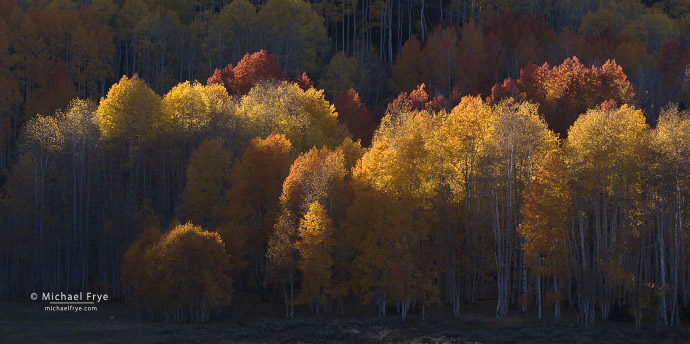
Backlit aspens, Utah
It’s Thanksgiving Day here in the United States – a good time to pause and think about all the things we have to be grateful for.
I’m very thankful for my family and friends. I’m grateful that our son is married and settled and happy. I’m so lucky to have been married to the same wonderful woman for 39 years – the best partner I could possibly have for all of life’s adventures.
I’m grateful for the opportunity to see and photograph so many beautiful places. This year Claudia and I traveled to Antarctica, Japan, Greenland, the Smokies, and all over the western U.S. What an incredible planet we live on!
And I’m always very grateful for the support I receive from you, my faithful blog readers. Your comments and emails help make writing this blog fun, and keep me motivated and inspired. Thank you!
Whether or not you celebrate Thanksgiving (or live in a country that celebrates it on a different day), I hope you all have a lot to be thankful for!
— Michael Frye















